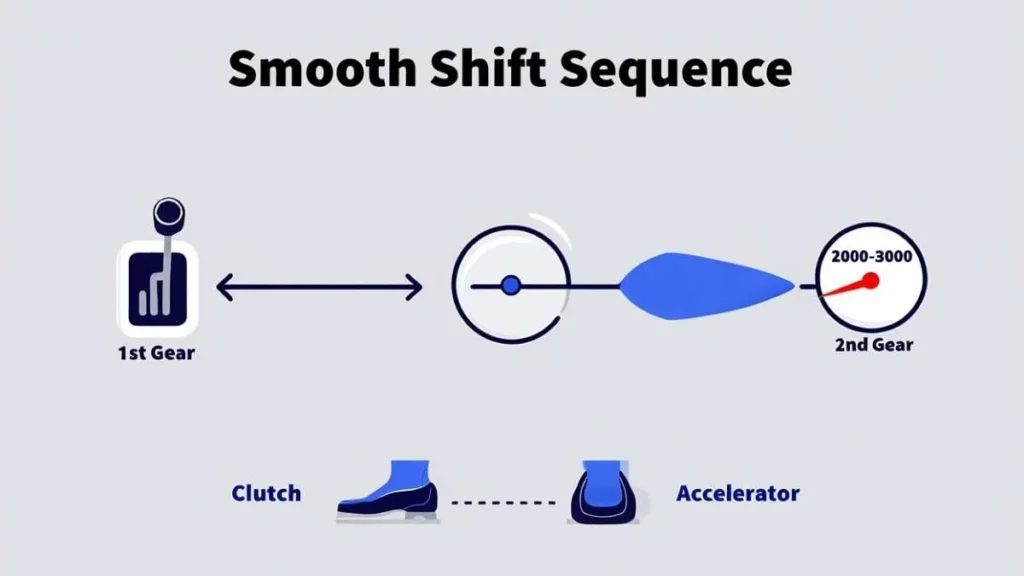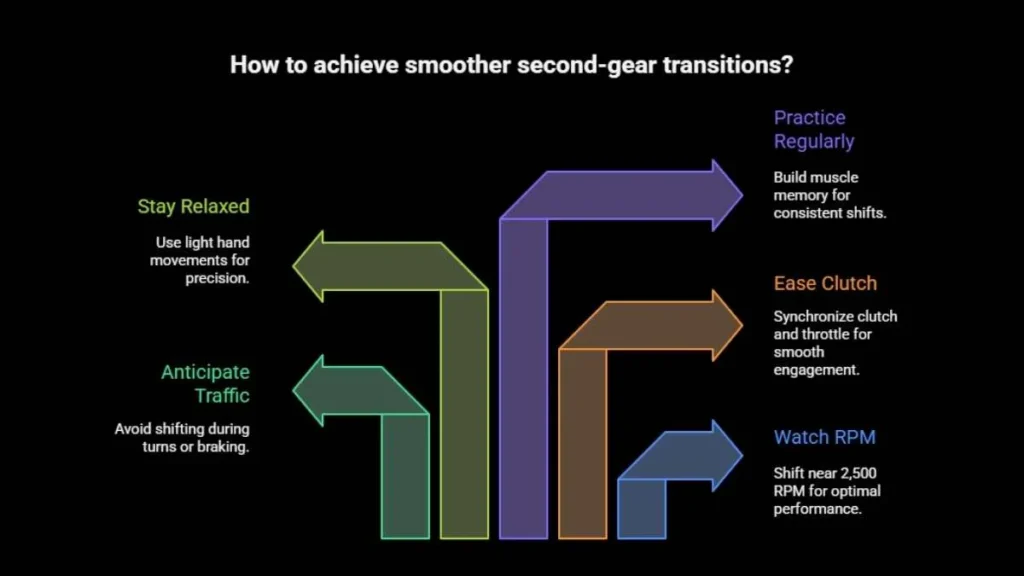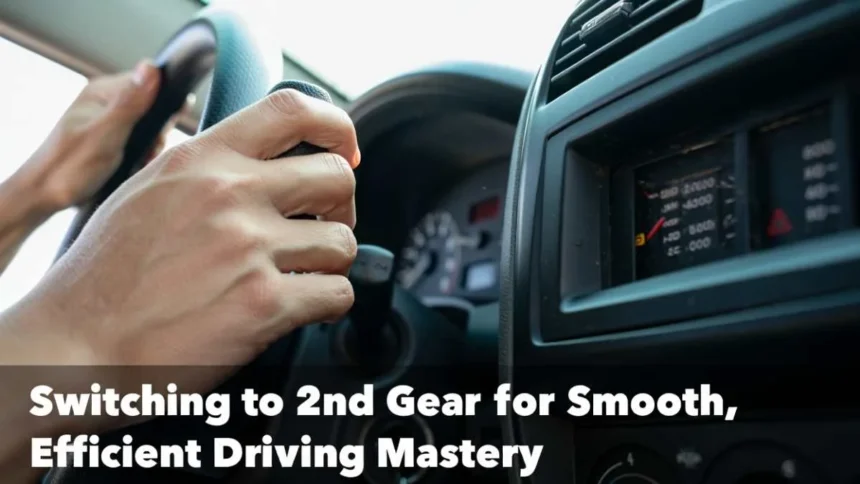Switching to 2nd gear is the process of shifting a car’s transmission from first to second gear after gaining enough initial speed. It enables the vehicle to accelerate more smoothly, prevents engine strain, and helps maintain steady momentum.
- Understanding Manual Transmission Basics
- Step-by-Step Guide to Switching to 2nd Gear
- How Gear Ratios Work in the Shift
- Benefits of Shifting into Second Gear at the Right Time
- Mistakes to Avoid While Switching to 2nd Gear
- Role of Second Gear in Different Driving Scenarios
- Pro Tips for Smoother Second-Gear Transitions
- Why Second Gear Knowledge Builds Better Drivers
- FAQs
- Conclusion: The Power Behind Every Second-Gear Shift
In simpler terms, switching to 2nd gear means balancing engine power and road speed for optimal driving control. Whether you’re learning to drive or perfecting manual skills, mastering this transition improves performance, fuel economy, and overall driving experience. Understanding when and how to switch correctly sets the foundation for confident and efficient driving.
Understanding Manual Transmission Basics
Before mastering the second gear shift, it’s crucial to grasp how a manual transmission works. In manual cars, the driver controls gear changes to manage engine speed (RPM) and wheel speed.
| Gear Stage | Purpose | Typical Speed Range | Power Output |
| 1st Gear | Starting from rest, maximum torque | 0–15 km/h | High |
| 2nd Gear | Smooth acceleration, moderate torque | 15–30 km/h | Medium |
| 3rd–5th Gears | Higher speeds, fuel efficiency | 30 km/h + | Lower |
Step-by-Step Guide to Switching to 2nd Gear
Learning the right technique transforms rough shifts into effortless transitions. Follow these steps carefully:

- Accelerate in First Gear until the car builds adequate momentum.
- Depress the Clutch Fully to disconnect the engine from the wheels.
- Move the Gear Lever smoothly from first to second position.
- Gradually release the Clutch while gently pressing the accelerator.
- Continue accelerating in second gear for steady movement.
How Gear Ratios Work in the Shift
Every gear controls how many times the engine turns per wheel rotation.
- First Gear: High ratio, great for torque, low for speed.
- Second Gear: Balanced ratio, enough torque for acceleration, enough speed for efficiency.
- Higher Gears: Lower ratio, minimal torque, maximum speed.
By switching to 2nd gear, you engage a new gear ratio that enables the engine to run efficiently without overexertion. This helps maintain both power and control, essential for consistent performance.
Benefits of Shifting into Second Gear at the Right Time
Proper timing when switching to 2nd gear provides several noticeable advantages, both for the driver and the vehicle:
a. Smoother Acceleration
Second gear offers a stable power flow, preventing jerks that often occur when staying too long in first gear or shifting too soon.
b. Reduced Engine Strain
Over-revving in first gear puts unnecessary pressure on the engine. Shifting at the right moment allows the engine to operate efficiently, prolonging its lifespan.
c. Better Fuel Efficiency
Driving in a lower gear for too long increases fuel consumption. Moving to second gear improves fuel economy by keeping the engine within its optimal RPM range.
d. Enhanced Control
Second gear provides better control during acceleration and cornering, particularly in urban traffic, slippery conditions, or tight maneuvers.
Mistakes to Avoid While Switching to 2nd Gear
Common mistakes include:
- Shifting too early causes the car to jerk.
- Staying too long in first gear, over-revving the engine.
- Half-clutching, which wears out the clutch plate.
- Abrupt clutch release, leading to stalling.
- Ignoring RPM indicators results in inefficient driving.
Role of Second Gear in Different Driving Scenarios
The role of the second gear varies depending on the driving environment and road conditions. In city traffic, switching to 2nd gear allows for steady movement at low speeds without frequent gear changes, making it ideal for stop-and-go situations. On uphill roads, this gear provides enough torque and control to climb smoothly without overworking the engine. In slippery or wet conditions, starting directly in second gear can minimize wheel spin and help maintain traction. Likewise, when driving downhill, staying in second gear allows for natural engine braking, reducing the need for continuous braking pressure. Whether navigating city streets, slopes, or challenging terrains, mastering second gear ensures smoother control, balanced acceleration, and safer handling under all driving circumstances.
Pro Tips for Smoother Second-Gear Transitions
Professional instructors often highlight rhythm and timing. Here are some practical tips for achieving that perfect shift:
- Watch the RPM Gauge: Shift near 2,500 RPM for most cars.
- Anticipate Traffic: Avoid shifting mid-turn or mid-brake.
- Ease the Clutch: Never drop it suddenly; synchronize with the throttle.
- Stay Relaxed: Light hand movement on the lever ensures precision.
- Consistency Counts: Build muscle memory through regular practice.

Why Second Gear Knowledge Builds Better Drivers
Understanding how and when to engage second gear strengthens driver awareness, safety, and mechanical sympathy. It teaches the importance of timing, observation, and coordination.
Drivers who master this shift typically maintain steadier speeds, smoother rides, and longer-lasting vehicles. Ultimately, second gear mastery represents confidence, knowing how to control the car instead of letting the car control you.
FAQs
Q1: Does switching to 2nd gear differ in electric vehicles?
EVs don’t use traditional gears; power control replaces manual shifting.
Q2: Can I start directly in 2nd gear on icy roads?
Yes, starting in 2nd can reduce wheel spin and improve traction.
Q3: Is it harmful to skip from 1st to 3rd gear?
Occasionally, but frequent skipping strains the clutch and gearbox.
Conclusion: The Power Behind Every Second-Gear Shift
Switching to 2nd gear is far more than a basic driving step; it’s a fundamental rhythm of manual control. By combining timing, practice, and attentiveness, drivers unlock smoother acceleration and mechanical harmony. In every transition from first to second, precision is power, and mastery begins with understanding.








